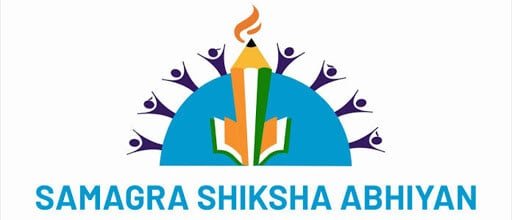Samagra Siksha Abhiyan is an integrated project started by the Department of School Education and Literacy, Ministry of Education, Government of India. Under this initiative, central government is going to provide financial help to the state governments to treat school education holistically without segmentation from pre-nursery to 12th. Here in this article, you will get detailed information about the Samagra Shiksha Abhiyan 2025 including All features, the main objective, and other relevant information.

About Samagra Shiksha Abhiyan
Samagra Shiksha Abhiyan has started to improve the school education sector. The main goal of this initiative is to improve school effectiveness measured in terms of equal opportunities for schooling and equitable learning outcomes. The scheme has been proposed during the union budget 2018-19. For effective implementation of the Abhiyan, the government has subdivided it into 3 schemes
- Sarva Shiksha Abhiyan (SSA),
- Rashtriya Madhyamik Shiksha Abhiyan (RMSA)
- Teacher Education (TE).
Also Check: National Education Policy
Highlights Of Samagra Shiksha Abhiyan
- Article about: Samagra Shiksha Abhiyan
- Launched by: Department of School Education and Literacy, Government of India
- Ministry: Ministry of Education
- Launched for: students
- Benefits: students
- Mode of application: online
- Official site: Samagra Shiksha
Objective Of The Samagra Siksha Abhiyan
The major objective of the Department of school education and literacy ministry of Education government of India behind starting samara Shiksha Abhiyan is to provide quality education and enhance the learning outcomes of the students. Moreover following are the other objectives of the initiative:
- Bridging Social and Gender Gaps in School Education
- Ensuring equity and inclusion at all levels of school education
- Ensuring minimum standards in schooling provisions
- Promoting vocationalisation of education
- Support States in the implementation of Right of Children to Free and Compulsory Education (RTE) Act, 2009
- Strengthening and up-gradation of SCERTs/State Institutes of Education
- DIET as a nodal agency for teacher training.
Samagra Siksha Abhiyan Implementation
At the state/ UT level, the implementation of the scheme will be made by the department through a single-state implementation society. A Governing Council headed by the Minister of Human Resource Development and a Project Approval Board (PAB) headed by the Secretary, of the Department of School Education and Literacy is going to implement the scheme at the National level.
Main Feature Of The Samagra Shiksha Abhiyan
- A holistic approach to education- This initiative will maintain the continuity in school education from pre-nursery to senior secondary levels.
- Administrative reform- This initiative provides Flexibility to the states to prioritize their interventions in school.
- Focus on Quality of Education- the main focus of the Abhiyan is to provide quality education by strengthening teacher education institutions like Scerts/Diets, Capacity Building of Teachers, and School Heads and by providing library grants for every school ranging from Rs. 5000 to Rs. 20000.
- Focus on Digital Education- The initiative also focuses on Digital Education by enhancing The use of digital technology in education via smart classrooms, digital boards and DTH channels, and ICT infrastructure in schools.
Other Features
- Strengthening of Schools
- Focus on Girl Education
- Focus on Inclusion
- Focus on Skill Development
- Focus on Sports and Physical Education
- Focus on Regional Balance
Major interventions at School Level
- Universal Access including Infrastructure Development and Retention;
- Gender and Equity;
- Inclusive Education;
- Quality;
- Financial support for Teacher Salary;
- Digital Initiatives;
- RTE Entitlements including uniforms, textbooks etc.;
- Pre-school Education;
- Vocational Education;
- Sports and Physical Education;
- Strengthening of Teacher Education and Training;
- Monitoring;
- Programme Management
- National Component.
Fund Sharing pattern
At present, the funds for this initiative is shared by the state and Central Government in the 10:90 ratio for the Northeastern states including Arunachal Pradesh, Assam, Manipur, Meghalaya, Mizoram, Nagaland, Sikkim, Tripura, Jammu, and Kashmir Himachal Pradesh and Uttarakhand. Rest all the states and union territories with Legislature are sharing in the ratio of 40:60. The funds are completely provided by the central government to the union territories without legislature.